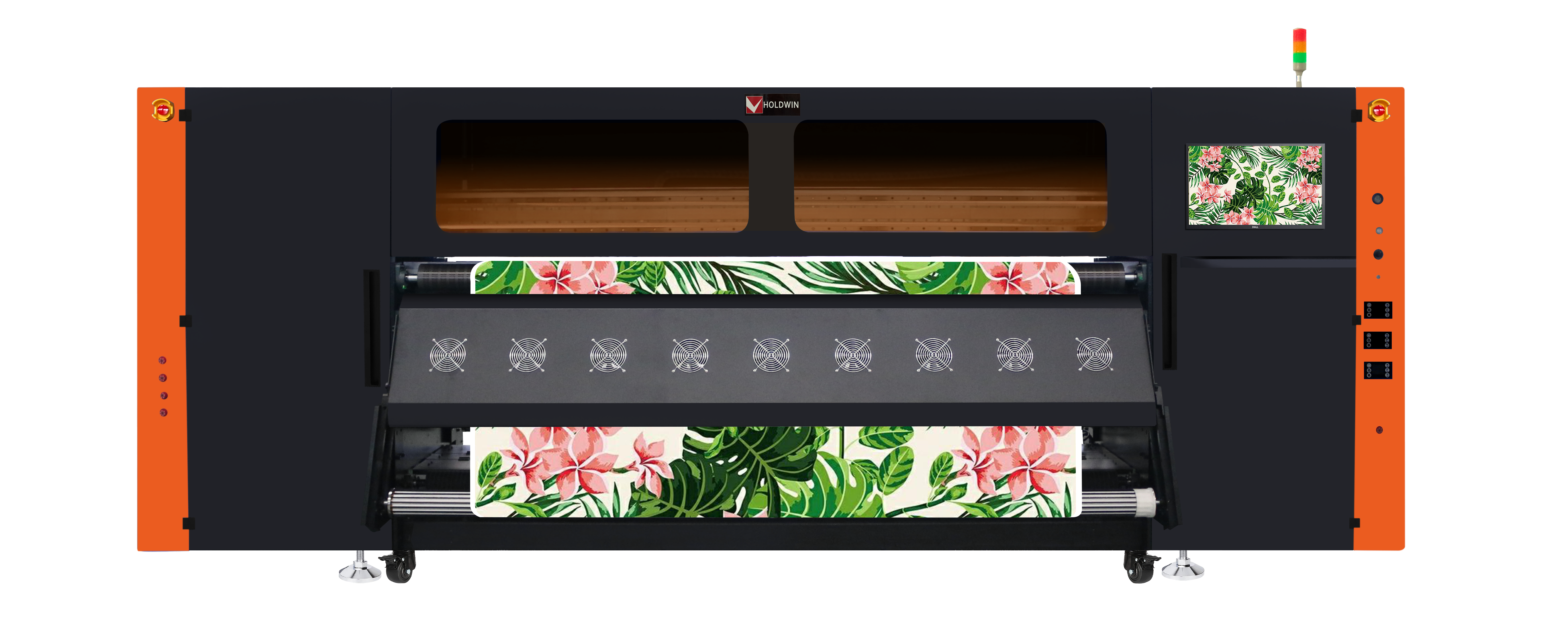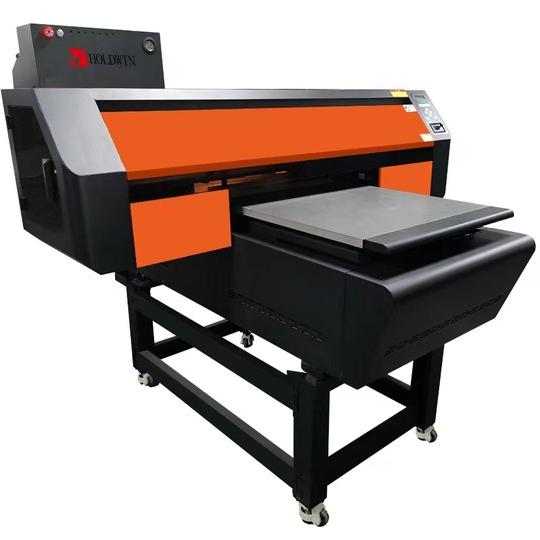
In today’s fast-paced and competitive textile industry, innovation is key. Digital printing machines have revolutionized the way designs are brought to life on fabrics, offering unmatched flexibility and precision. From garments and accessories to carpets and towels, the applications of digital printing span a vast range of materials and products. In this article, we will explore the versatility of digital printing machines, examining their core technologies, such as direct-to-fabric (DTF) printing, UV printing, and sublimation, while showcasing how these machines are shaping the future of textile manufacturing. For textile manufacturers, fashion designers, and printing technology enthusiasts, digital printing offers a pathway to enhanced creativity and efficiency. HOLDWIN, a global leader in the industry, is at the forefront of this transformation, committed to providing personalized solutions that meet the needs of diverse markets.
Digital printing technologies have advanced significantly over the past decade, offering versatile solutions that cater to various textile and material types. The core technologies used in the field today include:
Sublimation is one of the most popular methods in textile printing due to its ability to create vibrant and durable designs. This process involves transferring dye onto materials through heat, converting the solid dye into a gas without passing through a liquid state. Sublimation works best on polyester-based materials and is ideal for sportswear, home textiles, and promotional items.

DTF printing is another cutting-edge technology, allowing users to print designs directly onto fabric without the need for transfer paper. This technique provides flexibility in design and production speed, making it perfect for custom garment printing. DTF printers can handle a wide range of fabrics, including cotton, silk, and polyester, making it a go-to solution for fashion designers who require high-quality, custom prints.

UV printing offers another level of versatility, particularly when it comes to printing on non-textile materials such as wood, glass, and plastic. This technology uses ultraviolet light to cure ink instantly, resulting in vivid, long-lasting prints. UV printers come in various forms, including roll-to-roll, hybrid, and flatbed machines, making them suitable for flexible materials like banners or rigid surfaces such as tabletops and phone cases.

One of the most significant advantages of digital printing machines is their ability to offer personalized solutions. In the fashion industry, where individual expression is highly valued, digital printing enables designers to create custom patterns and designs with ease. Whether it’s a one-of-a-kind pattern for a limited edition clothing line or a custom print for a promotional product, digital printing machines allow businesses to cater to personalized demands without the need for large-scale production runs.
On-demand production is becoming increasingly popular as customers seek unique products tailored to their tastes. Digital printing machines facilitate this trend by allowing manufacturers to print small quantities quickly and cost-effectively. With the ability to print directly onto fabrics, these machines reduce waste and lead times, creating a more sustainable and responsive production process. This trend aligns perfectly with HOLDWIN’s commitment to innovation and its ability to provide customized solutions that meet client-specific needs.
Customer Testimonial: “Since adopting HOLDWIN’s digital printing solutions, we’ve been able to significantly reduce our production time while offering highly personalized designs for our customers. The versatility of their machines has allowed us to explore new possibilities in fashion and textile production.” — Jennifer Lee, Fashion Designer.
As sustainability becomes a crucial focus in the textile industry, digital printing machines play a vital role in reducing waste and improving production efficiency. Traditional printing methods often require large volumes of water, dyes, and chemicals, contributing to environmental degradation. In contrast, digital printing uses eco-friendly inks, minimal water, and allows for precise application of dyes, resulting in less waste and fewer harmful byproducts.
Digital printing’s ability to print on demand minimizes fabric waste, as manufacturers only produce what is needed. This is particularly important in fashion, where trends shift rapidly, and overproduction can lead to unsold inventory. By using digital printing technology, manufacturers can quickly adapt to market demands, reducing the environmental impact of overproduction and excess inventory.
*Image Description: A factory using HOLDWIN’s digital printing machines, showcasing an efficient, clean, and sustainable production environment with minimal waste.*
Digital printing machines have evolved alongside the rise of Industry 4.0, incorporating smart technologies that enhance productivity and precision. These machines are now equipped with advanced software for color management, ensuring that every print meets the highest quality standards. Additionally, they offer remote monitoring and maintenance capabilities, reducing downtime and improving overall operational efficiency.
HOLDWIN’s digital printing machines are designed with automation in mind, enabling seamless integration into existing production lines. Automated workflows not only enhance efficiency but also ensure consistency in the quality of prints. With smart technology, users can remotely adjust settings, monitor production, and even troubleshoot issues in real time, leading to more reliable and efficient operations.
The versatility of digital printing machines continues to push the boundaries of what is possible in the textile and fashion industries. From sublimation and DTF printing to UV technology, these machines offer endless possibilities for customization, sustainability, and efficiency. HOLDWIN is proud to lead this charge, providing cutting-edge solutions that help businesses around the world meet their unique needs. As we look toward the future, digital printing will undoubtedly remain a driving force in the evolution of textile manufacturing.
– Smith, J. (2022). *Advances in Digital Textile Printing Technologies.* Journal of Textile Science, 45(4), 215-229.
– Johnson, R., & Lee, M. (2021). *Sustainability in Fashion: The Role of Digital Printing.* Fashion and Textile Review, 32(2), 95-112.
– Perez, A. (2020). *Digital Printing in the Era of Industry 4.0.* International Journal of Manufacturing, 54(6), 412-427.

Zhiyu is passionate about good products, good services, and good prices to let consumers know that choosing us is the right choice! For partners and end customers, we will provide one-on-one considerate smart services and provide you with more high-quality procurement solutions.